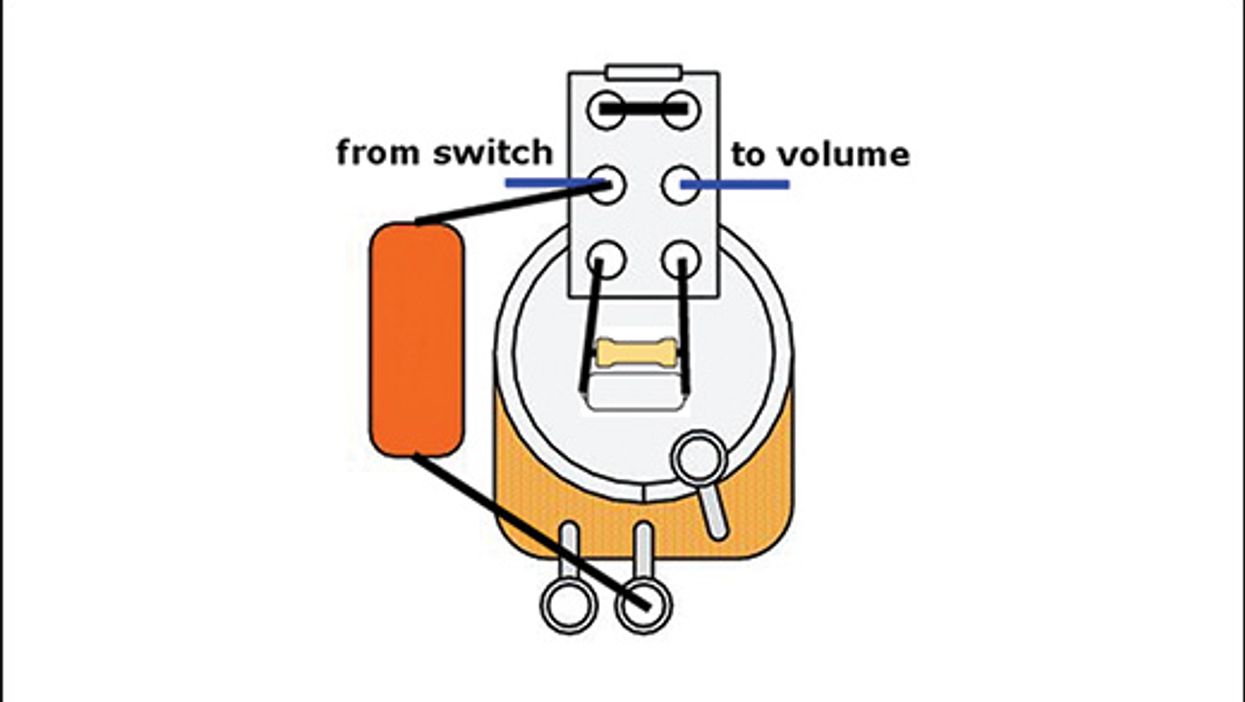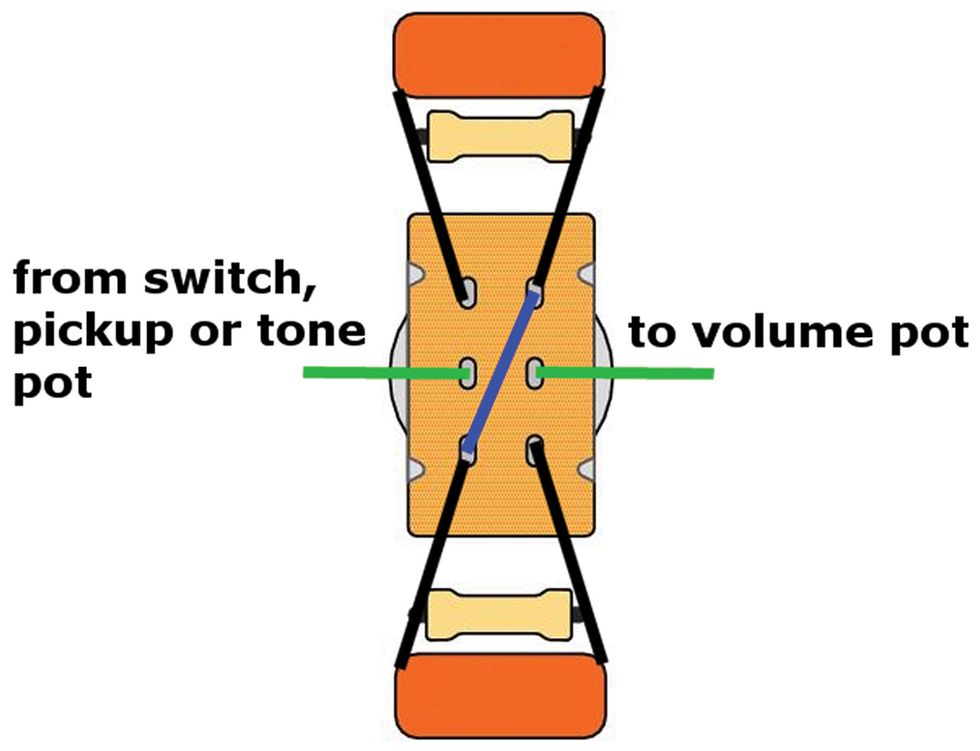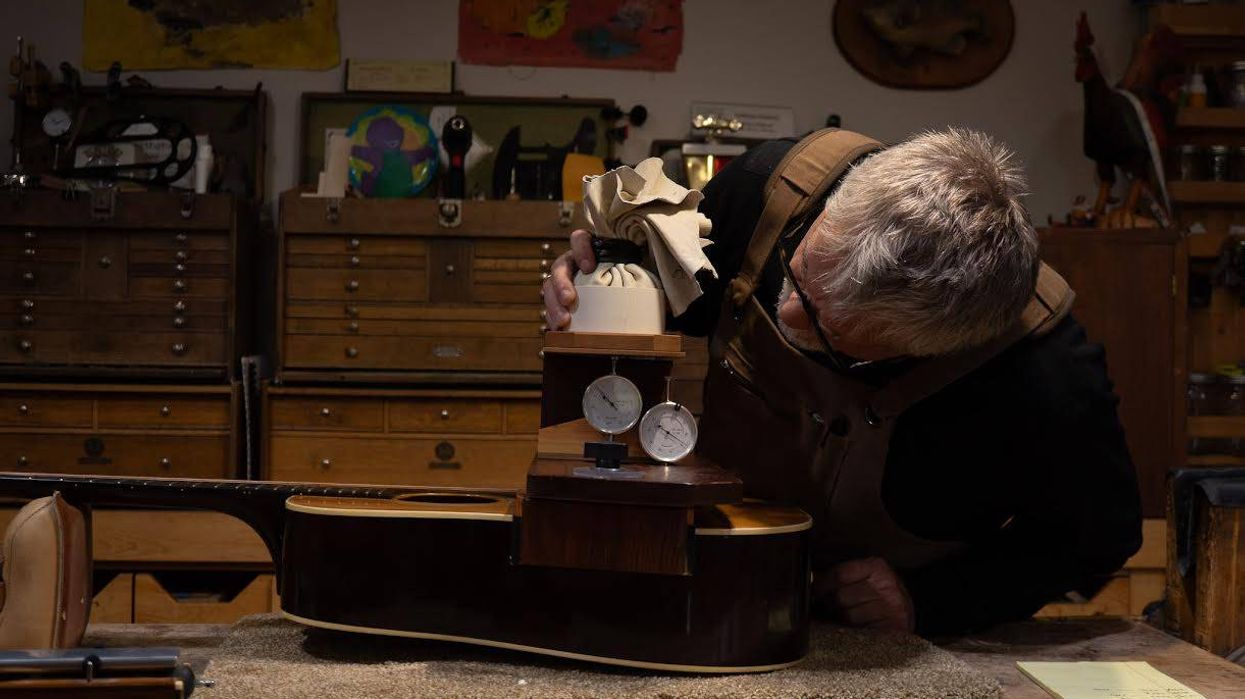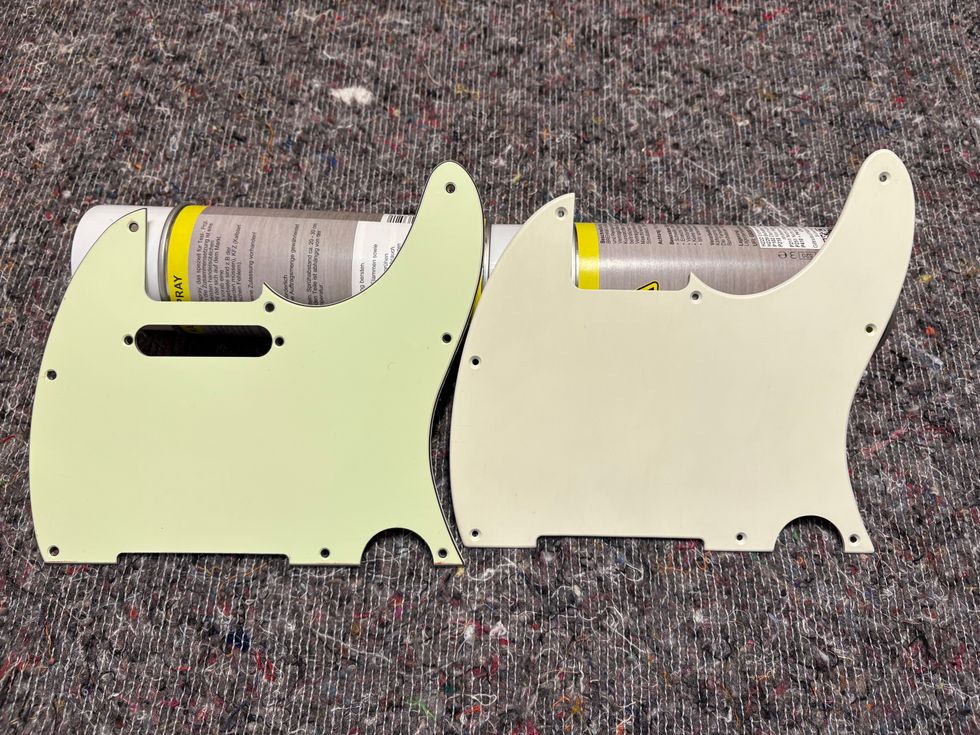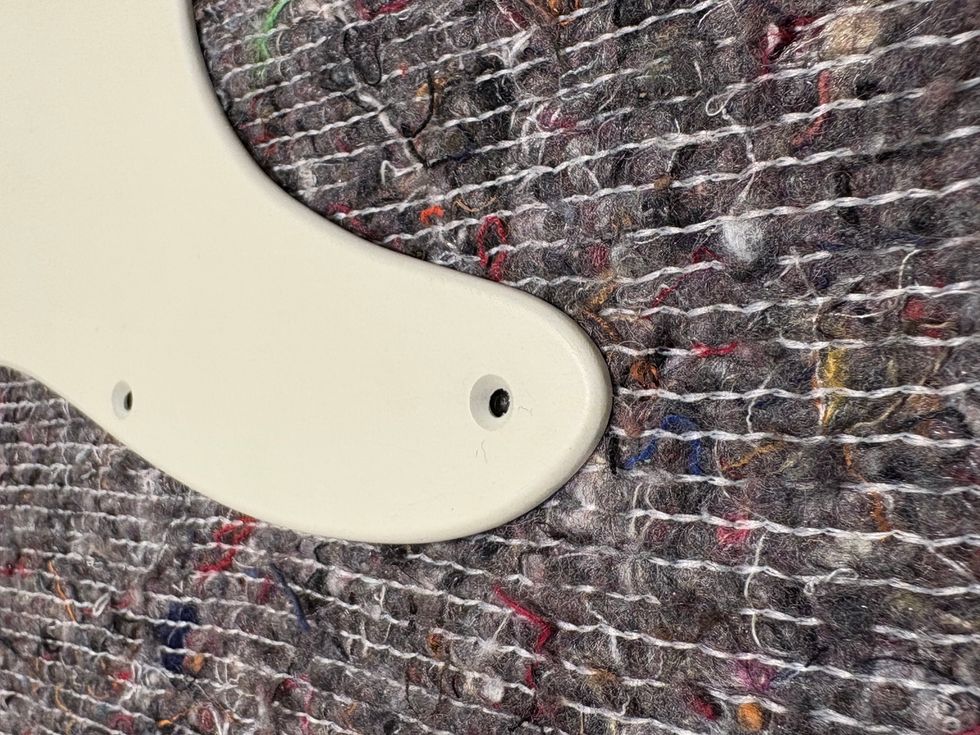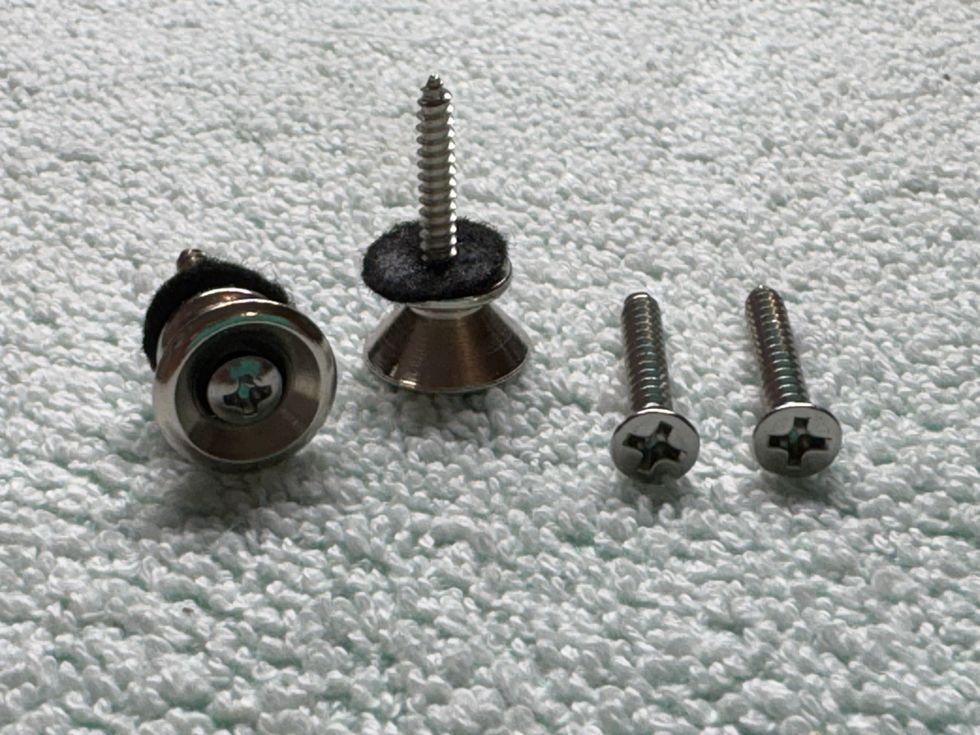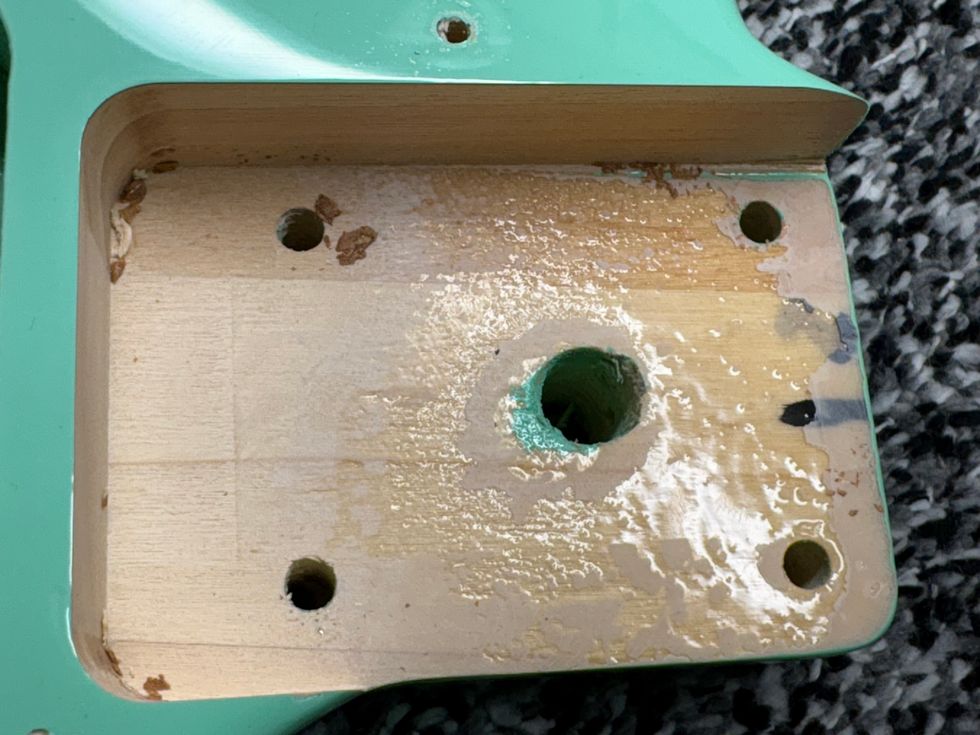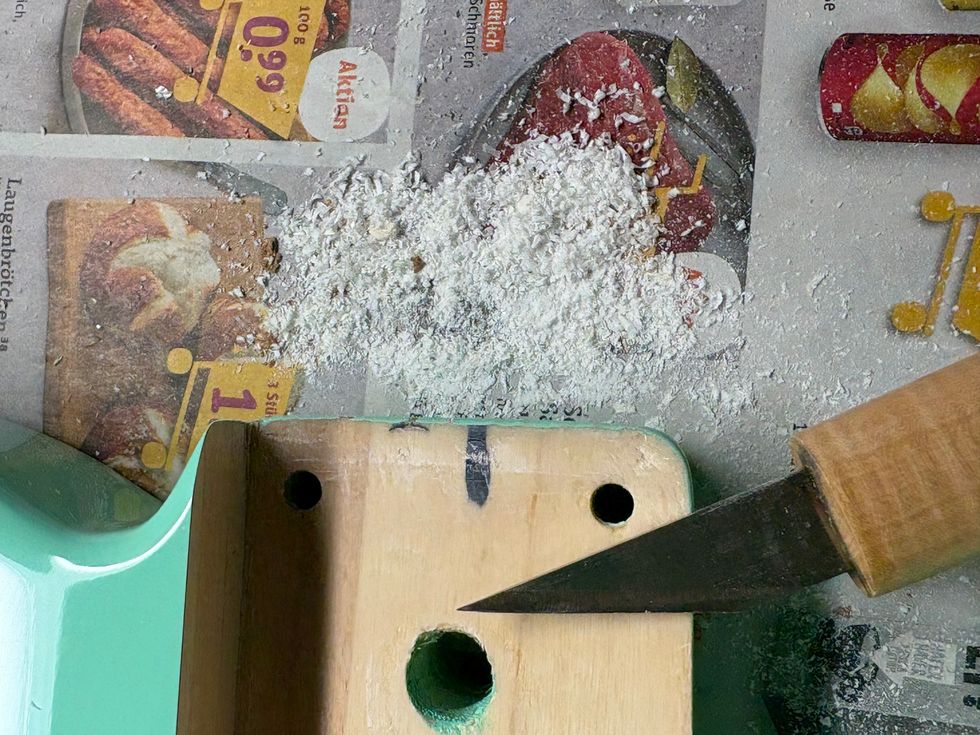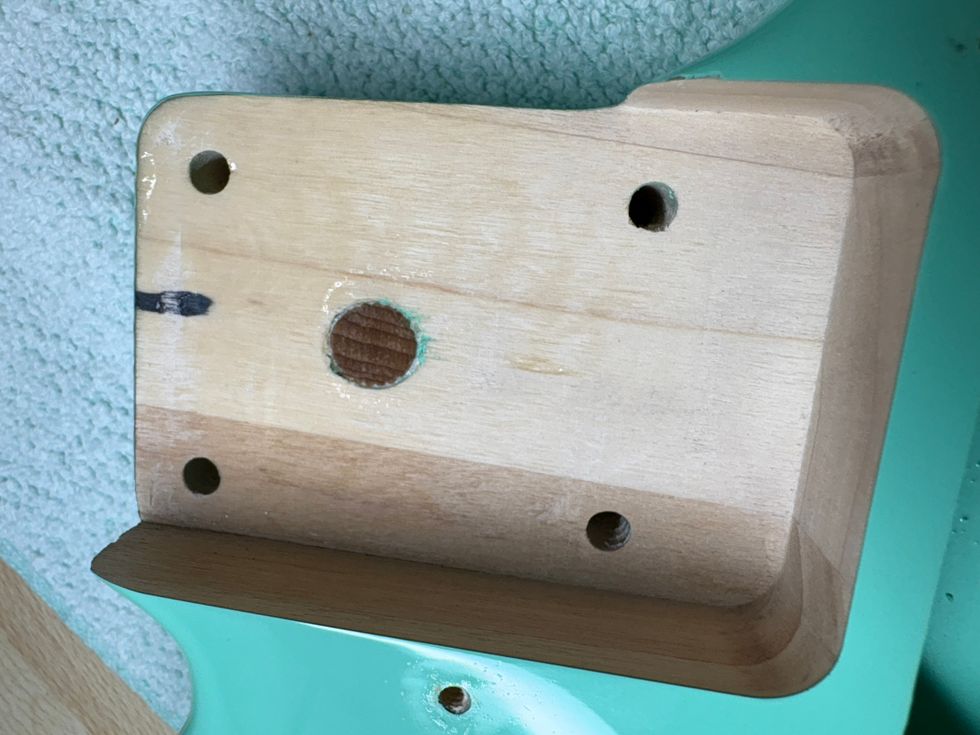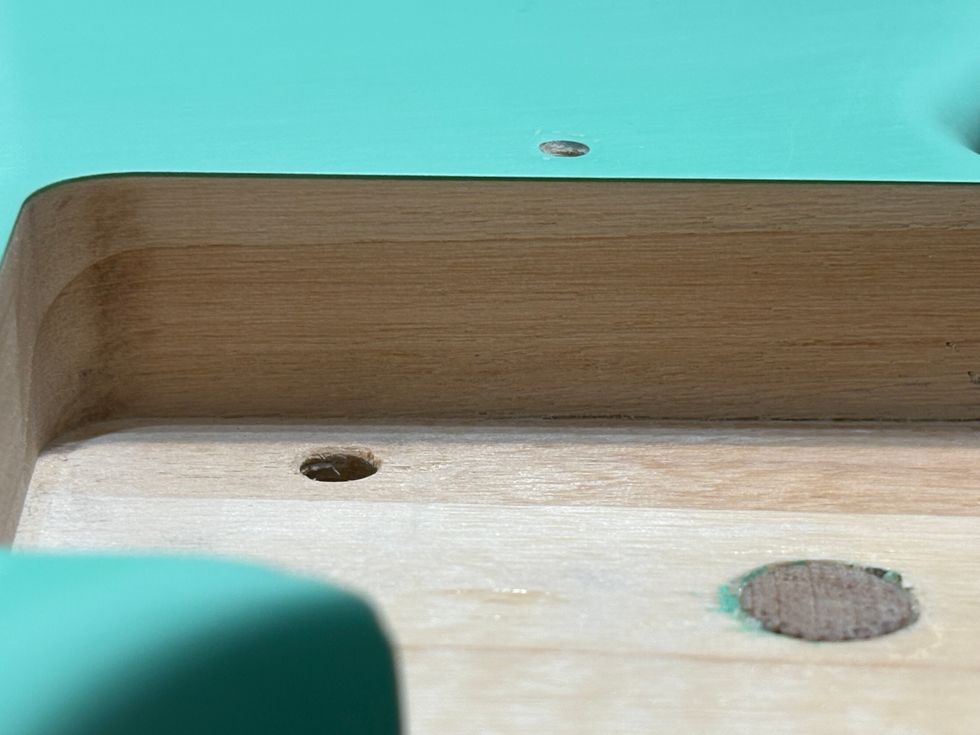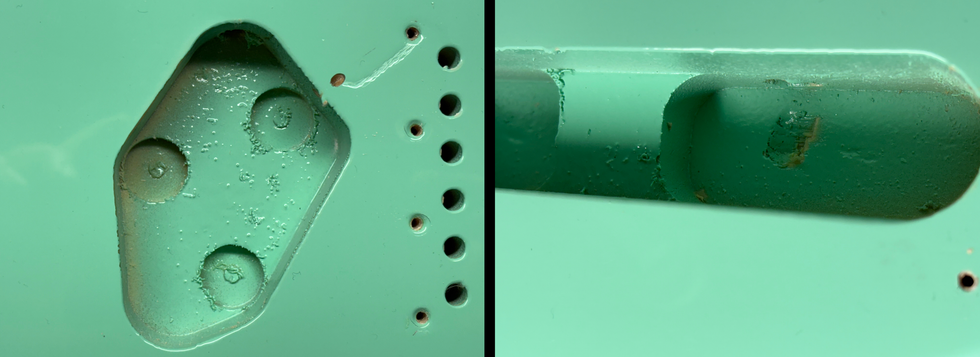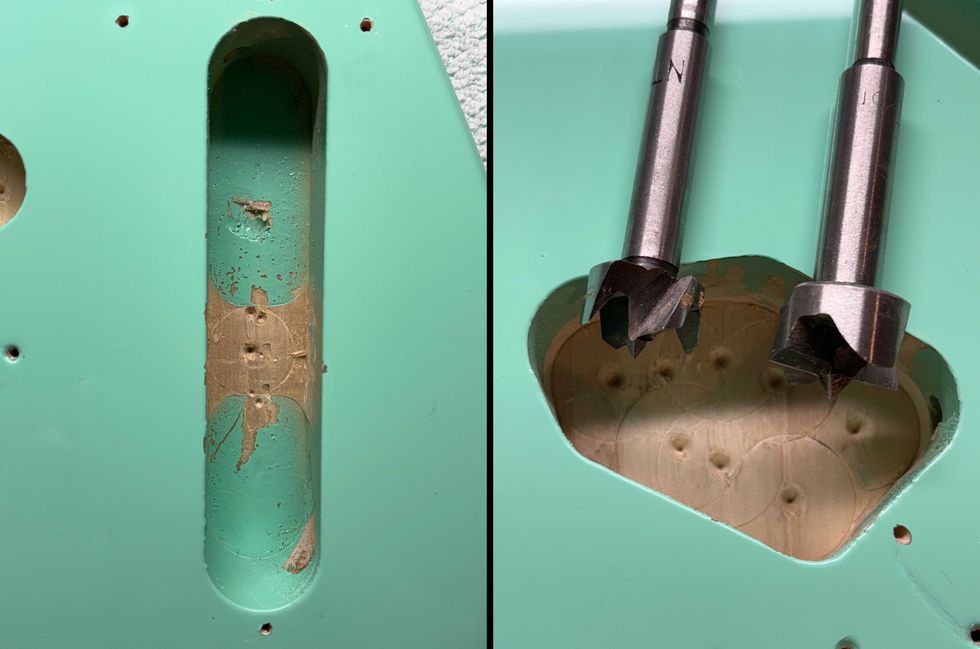I recently came across a Yamaha ad for their Revstar guitar series that mentions a “Dry Switch" function, which Yamaha describes on their website like this:
Designed especially for Revstar, Yamaha's proprietary Dry Switch gives you the versatility of a coil-split, but with a tone that's miles ahead. Using a passive filter circuit painstakingly designed to give the perfect frequency response, the Dry Switch filters out low frequencies to give the punch and clarity of a single-coil pickup minus the inevitable hum and hollow tone often associated with split humbucking pickups. And because it's a filter circuit, the Dry Switch works on both humbuckers and P-90s for a totally unique, usable tone.
This description is accompanied by a chart that illustrates how engaging the switch lowers the bass frequencies approximately 4 dB, relative to the highs, starting at around 3 kHz. Intrigued by the description and chart, I decided to peek under the hood.
Studying Yamaha's materials, it became clear that this is a type of passive bass-cut filter. Guitar manufacturers have been exploring this idea for decades. In the mid '50s, DeArmond equipped their floating Rhythm Chief 1100 single-coil with a “Rhythm/Solo" switch on the pickup's control box. This used a bass-cut capacitor to filter out some low frequencies. In fact, such rhythm/solo switches were widely used on guitars in the '60s— especially on German brands, such as Hofner, Framus, and Klira, but also instruments from the U.K., U.S., and Japan. These circuits usually centered around a bass-cut capacitor. Rickenbacker also used a similar idea—on the 4001 bass, for example—calling it a “Treble Tone" circuit. Other companies, such as G&L, Music Man, and Reverend, offer similar technology on some of their instruments.
Image 2
In October 2016, PG's Contributing Editor Joe Gore wrote an excellent article on this subject called “The Fabulous Focus Knob." You simply must check it out. In addition to what Joe wrote, I'll add that a no-load pot will work best for this application.
So why revisit this subject of passive bass-cut circuitry? Well, Yamaha's Dry Switch works differently from what we've explored previously: It's a RC network connected to the switch of the push-pull tone pot. (RC is an abbreviation for “resistor and capacitor.") You can only engage or disengage this bass-cut feature—it's not controlled with a potentiometer.
Before we go any further, let's ask another question: Why would guitarists want to cut bass out of their tone? This type of circuit is most useful on a humbucker-equipped guitar played with overdrive or distortion. As a rule of thumb, we can say the more distortion you use, the less bass you want in your tone to prevent it from getting muddy and mushy.
But you can also use a carefully designed bass-cut switch to make a humbucker emulate the tone of a single-coil pickup without losing the 'bucker's hum-cancelling capability. A humbucker's tone gets brighter and clearer, which is also cool for playing clean jazz lines.
Located on the DPDT switch of a push-pull tone pot, Yamaha's Dry Switch consists of a 330k resistor and a 3300 pF capacitor connected in parallel. Yamaha uses a carbon film resistor and a standard film cap, but if you're going to do this mod, I recommend upgrading to a metal film resistor and a silver mica capacitor for the best sonic results. The RC network is connected to two lugs of the push-pull tone pot's switch as shown in Image 1. The cap on the left is the tone control's standard capacitor. On the Yamaha, this is a 0.022 µF film cap.
The specs Yamaha chose for their RC network's two components work very well for a humbucker with a 500k volume pot, as found on their Revstar models. If you want to control your humbucker with a 250k volume pot instead of a 500k unit, I suggest using a 150k resistor and a 6800 pF capacitor.
If you decide to install this bass-cut circuit in a guitar with single-coils, you can use the same values for the cap (3300 pF for a 500k volume pot and 6800 pF for a 250k pot), but you'll need to play around with the resistor values to find something you like. Typically, it makes sense to use a larger resistor value with a humbucker, compared to a single-coil pickup, so try smaller resistor values than the 330k humbucker spec.
Image 3
Here are two things to ponder while you experiment with different resistor values:
• If you use a bass-cut cap without a resistor, you cut bass and lower mids. The lower the bass frequencies, the deeper the cut.
• Wiring a resistor in parallel with a cap limits the cut in the bass frequencies.
To bring it all together, look at Image 2, which my friend Bernd C. Meiser drew for us: The blue vertical line shows the cut in the bass frequencies that you can adjust with the resistor. A larger resistor value equals a larger bass cut, and vice versa. The green circle shows the location of the mid frequencies that you can adjust with the capacitor value. A larger cap value drops the green circle to the lower frequencies, and vice versa.
In closing, I want to offer an expanded version of the switchable bass-cut circuit—one with two different RC networks. This can be very handy if you want a pair of switchable sounds at your fingertips: perhaps one for crunch and another for insane heavy shredding. It's a cool sonic addition, especially with a neck humbucker. You only need a mini DPDT on/on/on toggle switch for this. Connect your RC networks as shown in Image 3, and then get ready to wail.
Next time we'll revisit our homemade electrolysis bath to learn more about how it works, so stay tuned. Until then ... keep on modding!


